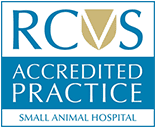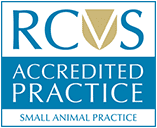The word brachycephalic literally means ‘short headed’, and in veterinary medicine we use it to describe patients who have a shortened snout or nose.
Popular brachycephalic breeds of dogs include the English and French Bulldog, Pekinese, Boston Terrier, Pug, Lhasa Apso, Shit Zhu, boxers , Cavalier King Charles Spaniel and Bull mastiff. We also see brachycephalic cats such as the Persians, and rabbits such as the Netherland dwarf.
While not all of our brachycephalic patients have associated health problems the shape of their nose and the head can place them at risk of a condition called Brachycephalic Obstructive Airway Syndrome (BOAS).
BOAS is the term given to the effect the shortened head of these animals has on the passage of air through the upper airways. The signs of BOAS can vary from mild snoring or snorting noises to severe breathing problems which can sadly be life threatening.
Common signs owners may see include noisy breathing, snoring, exercise and heat intolerance, sleep apnoea (where the breathing starts and stops during sleep), regurgitation, vomiting and excessive salivation.
There are four distinct airway abnormalities that can cause BOAS and a patient can have one or more of these abnormalities.
They include:
- Narrow nares (nostrils) – small or narrow nostrils which restrict the flow of air through the nostrils when the animal breathes through its nose. In addition the cartilage which supports the nose can be weak and collapse during inspiration (breathing in).
- Elongated soft palate – The soft palate is the soft tissue at the back of the roof of the mouth, it protects the trachea (windpipe) from food during swallowing, but if it is too long it can extend into the back of the throat and rather than protecting the trachea it can obstruct it. A long soft palate can also cause turbulent airflow in the area of the larynx (voice box) and both of these effects increase the effort required by an affected animal when it breathes in, this can make the upper airway very inflamed.
- Hypoplastic trachea – The windpipe or trachea is narrower in diameter compared to a non-brachycephalic individual which makes it harder for the animal to breath especially if its oxygen requirement is increased as it would be during exercise for example.
- Secondary Effects – Because of the abnormalities discussed above Brachycephalic dogs use extra effort when they breathe in, and this eventually causes secondary problems as the airways are not able to adapt to the increased pressure place upon them.
These changes include:
- Gradual collapse of the larynx (voice box) – This is unfortunately a progressive condition.
- Tonsillar eversion and hypertrophy (overgrowth) – The tonsils normally sit in small hollows towards the back of the mouth. They can become enlarged and so protrude into the back of the mouth which reduces the size of the airway still further.
- Pharyngeal muscle hypertrophy – The pharynx is the area at the back of the mouth at the entrance to the larynx (voice box). These muscles become enlarged (hypertrophied) due to the altered pressures in the upper airway.
- Acid Reflux – This occurs when acid from the stomach moves up into the oesophagus (the tube from the mouth to the stomach which carries food). Acid Reflux can cause inflammation of the oesophagus and sometimes ulceration of the stomach – it Is not a comfortable condition. In severe cases a hiatal hernia can occur during breathing – this is when part of the stomach moves into the chest cavity.
- Heart Failure – Thankfully this is less common than the other secondary effects of BOAS.
Our vets will assess your pet’s anatomy during a physical examination. They may ask you about how your dog behaves at home, for example do they snore? They may also ask you to exercise your dog for a few minutes to see if their breathing changes.
Most Brachycephalic animals have some degree of upper airway obstruction (you can usually hear this as snoring or snorting noises).
Following an examination and a discussion our vets (which will include how your pet copes with exercise and warm conditions), will work with you to decide if your pet is experiencing a significant level of BOAS signs or if the shape of their face may predispose him or her to problems.
Unfortunately we can only examine the nostrils properly without anaesthetising your pet. For this reason our initial diagnosis is based on the information obtained during a physical examination and discussion with you, further investigations under general anaesthetic will be needed to confirm the diagnosis.
Further investigations can include blood tests, assessment of the heart with x-rays and/or ultrasound, assessment of acid reflux using x-rays and/or endoscopy (a camera). It is necessary to carry out these investigations under general anaesthetic (other than the blood test which can be done in a conscious patient).
Anaesthesia of brachycephalic patients can be associated with increased risk especially during the induction (as the patient goes to sleep) and recovery (as the patient wakes up) phase. The team here at My Pets Vets is experienced in anaesthetising brachycephalic patients, however in some circumstances we may advise referral to a specialist.
How can we help?
We have a number of options available when it comes to helping your pet and we will work with you to formulate a personalised treatment plan that will hopefully help.
- Stenotic Nares – Surgical removal of a section of the cartilage from the front of each nostril can help improve the airflow through the nose.
- Elongated Soft Palate – Surgical removal of the excessive length of the soft palate can help improve the airflow in this area.
- Laryngeal Collapse – This may be improved by improving the airflow in the area by reducing the size of the soft palate and increasing the size of the nostrils. Sometimes more specialist procedures are needed and our team will discuss this with you should it be necessary for your pet to be referred to a specialist.
- Everted Tonsils – Some patients may be helped by removing the tonsils.
- Acid Reflux – Our team can prescribe regular medications to help your pet with this condition.
- Hiatal Hernia – Our team can prescribe regular medications to help your pet with this condition or discuss surgical options with you if necessary.
- Weight Management – This is an extremely important part of management of the treatment of BOAS. As a lot of patients who struggle with BOAS cannot breath well enough to exercise a lot, they are prone to gaining weight and this additional weight puts increased pressure on their airways. Our team are here to support you with this as we understand how difficult weight management can be for some of our patients, but it is crucial in helping them.
Unfortunately we are never able to create a completely normal airway for brachycephalic animals and we therefore aim to slow the progression of secondary changes discussed above by improving the airflow through the upper airways.
For this reason we may discuss increasing the size of your pet’s nares (should they be stenotic), when your pet is young, sometimes at the time of a neutering procedure in an attempt to reduce secondary changes.
Sadly dogs suffering from BOAS are always going to be susceptible to heat stroke and are unlikely to be able to exercise in the same way as a dog that is not brachycephalic may be able too.
If you are worried about your pet please do not hesitate to talk to us.





